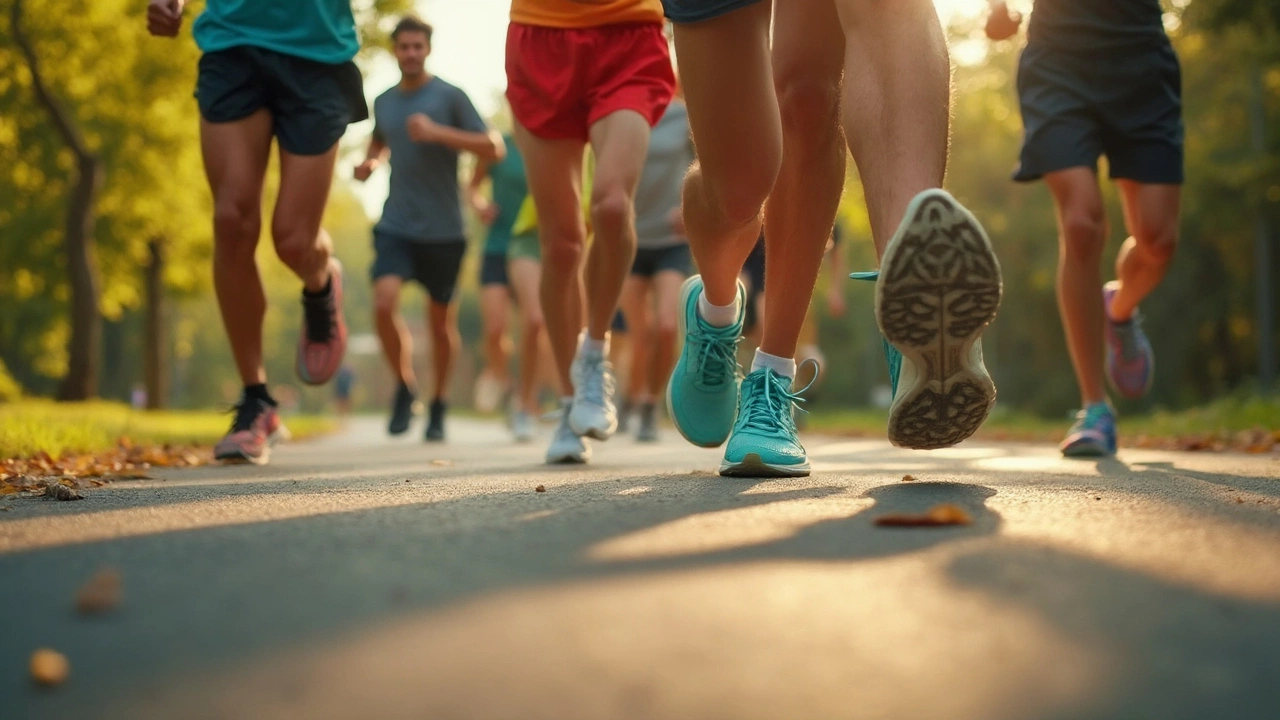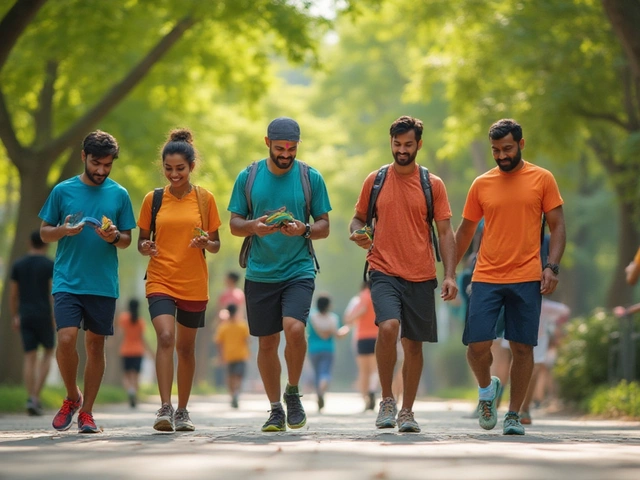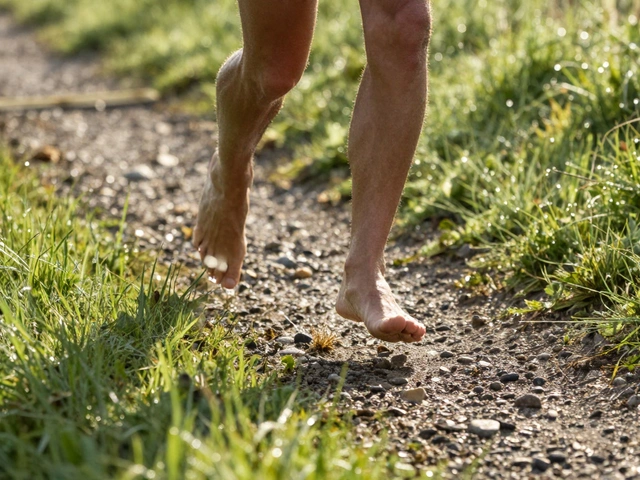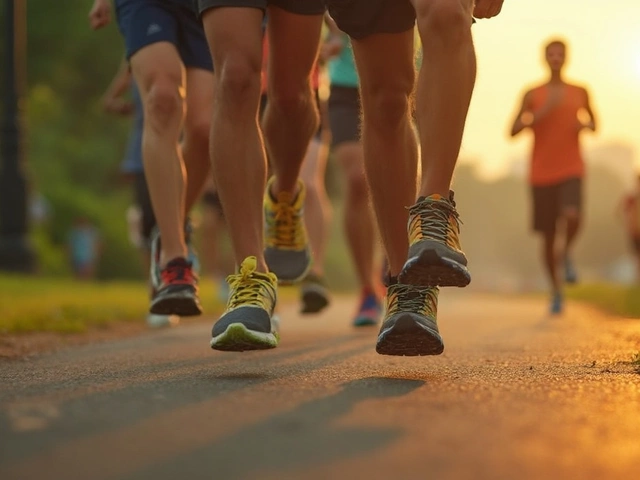If you've ever found yourself wondering if those fancy running shoes are really necessary, you're not alone. It might seem easy to just grab any old sneakers from the back of your closet and hit the pavement, but the truth is, running shoes are designed for a reason. From reducing the risk of injuries to improving your performance, running shoes play a critical role in your fitness journey.
You see, every foot is different, and the demands of running require specialized support. Running shoes are built to absorb shock, offer stability, and prevent pesky issues like blisters or shin splints. And let's not forget about the boost they give your stride! Thanks to the magic of technology, these shoes are crafted with super materials that adapt to your feet's needs during a run.
So, while it might be tempting to skip the extra expense, investing in a good pair of running shoes could save your feet—and your wallet—from future problems. Whether you're a seasoned marathoner or a newbie planning your first jog, the right footwear can make all the difference.
- Why Running Shoes Matter
- The Technology Behind Running Shoes
- Health Benefits of Proper Footwear
- Choosing the Right Pair for You
- Common Myths About Running Shoes
- Tips for Maintaining Your Running Shoes
Why Running Shoes Matter
So, what's the big deal about running shoes? It's all about protection and performance, my friend. Running isn't just a stroll in the park—it's a high-impact activity, and your feet take the brunt of it. Regular sneakers can lead to aches, pains, and even long-term injuries because they're not built to handle the stress running puts on your body.
Running shoes are specifically engineered to offer cushioning, support, and durability. They come with shock-absorbing soles that protect your joints, especially your knees and ankles, from the impact you'll face with every step. That's why people who wear proper footwear tend to report fewer injuries.
Think of running shoes like the right tool for the job. They're made with breathable materials, keeping your feet cool and dry, which reduces blisters. Good traction from the outsole helps prevent slipping, especially on tricky surfaces like wet roads or trails.
Let's talk about fit. These aren't one-size-fits-all; you need shoes that match your specific foot shape and running style. Are you a heel striker or do you land on your toes? Do you have flat feet or high arches? A running shoe tackles these nuances, providing the personalized support your feet crave.
- Stability: Provides balance, reducing ankle injuries and improving posture.
- Cushioning: Absorbs impact, protecting joints.
- Durability: Built to withstand repeated stress, unlike casual shoes.
Simply put, a good pair of running shoes can give you the comfort and confidence to focus on your run, not your feet! And guess what—taking care of your feet now could save you a trip to the doctor later.
The Technology Behind Running Shoes
When you dive into the world of running shoes, you'll find it's packed with clever tech. These aren’t just your average shoes; they’ve got some serious science going on under the hood. So, what makes them so special?
One of the standout features is the cushioning. It's like running on clouds because of materials like EVA foam or gel-based systems that soak up impact as your foot hits the ground. This cushioning is crucial to reduce stress on your joints, keeping those knees happy.
Next, let’s talk about stability. No two runners are the same; that's why many running shoes come with features to correct your gait. If you overpronate, some pairs have stiff heel counters or medial posts to keep your stride aligned.
Traction is another biggie. The outsoles often have intricate tread patterns, almost like tire treads, to grip different surfaces, whether it’s pavement or a gravel trail, so you don't slip and slide all over the place.
Some brands go a step further, adding breathable mesh tops to keep your feet cool and comfy. That way, you’re not dealing with swamp-like conditions after a long run.
| Feature | Benefit |
|---|---|
| Cushioning | Reduces joint impact |
| Stability | Maintains proper foot alignment |
| Traction | Prevents slipping on various surfaces |
| Breathability | Keeps feet cool |
Every new pair incorporates these tech advancements, ensuring your feet stay protected no matter the distance. So next time you lace up, you can appreciate all the behind-the-scenes magic in those running shoes.
Health Benefits of Proper Footwear
Think running shoes are just a fashion statement? Think again! The right running shoes can be a game-changer for your health. One biggie is how they help in preventing injuries. How? Well, these shoes are designed to provide the cushioning you need to reduce the impact on your joints, especially your knees and ankles. So, if you're pounding the pavement without proper footwear, you’re risking all sorts of aches and pains that could sideline you faster than you can say 'sprain.'
Another perk? Stability. By giving you that snug and supportive fit, running shoes keep your feet from rolling in or out, which is something generic sneakers just can’t do. This feature is crucial, especially if you’ve got flat feet or high arches. It helps in avoiding overpronation or underpronation, which can lead to long-term issues.
Let’s not forget about the boost to your performance. Sounds good, right? The right shoes can actually make you run better. The tech inside them, like responsive cushioning and enhanced grip, works to make each stride smoother, meaning you're not fighting against your own gear while trying to beat your personal best.
And if numbers get you going, check this out: according to a health study, folks using specialized running shoes saw a 60% decrease in running-related injuries compared to those just using any old pair of trainers.
| Type of Footwear | Risk of Injury |
|---|---|
| Proper Running Shoes | Low |
| Casual Sneakers | Moderate |
| Barefoot Running | High |
Finally, proper footwear can help in keeping blisters at bay. The breathable materials used help keep your feet dry, avoiding the kind of moisture buildup that leads to those nasty skin troubles. So, when it comes to finding footwear for your runs, think of it as an investment in yourself and your health.
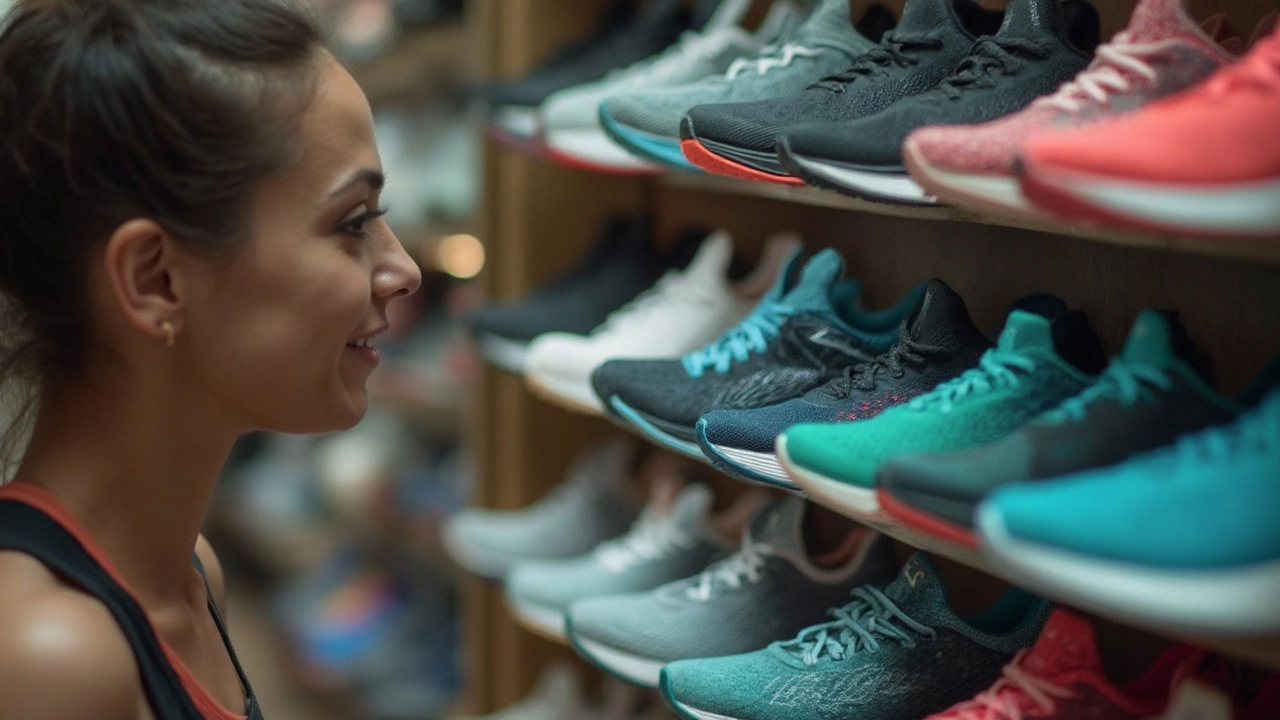
Choosing the Right Pair for You
Alright, so you're convinced that running shoes are worth the investment. But with so many options out there, how do you pick the right pair? It's not just about finding a shoe that looks cool—it's about what fits your unique needs and running style.
First things first, know your foot type. Heading to a store with a footwear specialist can really help. They'll often do a gait analysis to see how you run and what kind of support you might need. There are three main types of feet: neutral, over-pronated, and under-pronated. Figuring this out is super crucial, as each type affects your shoe choice.
"The right running shoe can make or break your experience—it’s about comfort as much as it is about performance," says Dr. Emily Splichal, a podiatrist and human movement specialist.
Here's a quick checklist to guide you:
- Visit a Specialty Running Store: These places aren't just trying to sell you shoes. They've got knowledgeable staff who often run themselves.
- Size Matters: Your feet swell when you run, so try on shoes in the afternoon when your feet are naturally a bit larger.
- Consider Mileage and Terrain: Think about where and how often you're running. Some shoes are better for trails, while others excel on pavement.
- Don’t Forget Socks: Try on shoes with the kind of socks you’d typically run in. It seems minor, but it makes a big difference.
- Test Them Out: Most stores allow you to test shoes on a treadmill. Take advantage of this to feel how they perform in action.
And don't forget, running gear is an evolving field. New models come out all the time, often featuring the latest tech in both comfort and performance. Be open to trying something new, especially if it aligns with your specific needs.
Trust me, once you have the right shoes, running becomes a whole lot more enjoyable. Happy trails!
Common Myths About Running Shoes
When it comes to running shoes, there's no shortage of myths floating around. People talk about these shoes like they're magical unicorns, which can be a bit misleading. Let’s bust some of these myths right now.
First up, there's the idea that pricier shoes automatically mean better performance. While it might be tempting to think that dropping a lot of cash on a pair of running shoes will make you run like Usain Bolt, that's not always true. Sure, high-end shoes often have advanced technology, but what's more important is how well they fit and support your specific needs.
Another common misconception is that you need to replace your shoes every 300 miles, no questions asked. In reality, how often you should swap them out depends on your running style and frequency. Some folks might wear them out faster with a daily jog on rough trails, while others can keep theirs longer. Feel for wear and tear is key.
There's also this notion that foot type, like flat feet or high arches, doesn't matter because shoes adapt to all. But hold up! Choosing footwear based on how your foot rolls inward when you run can make a huge difference in comfort and injury prevention. For example, overpronators need a shoe with more support to avoid injury.
"Matching the right shoe to your foot type could significantly reduce injury risk and improve performance," says Dr. John Smith, a leading podiatrist in sports medicine.
And many up-and-comers think that cushioning is all that matters. While cushioning is crucial for comfort, the shoe's overall fit and how it suits your running style are just as vital. It's about the shoe wrapping your foot like it was made just for you.
Last, but not least, some people swear you should train with heavier shoes to make racing with lighter ones feel easier. It sounds logical, but it's better to train in what you'll run in during an event. This way, your body gets used to the dynamics and you can trust your gear fully during competition.
So, next time you’re in the market for some new runners, remember these busted myths and what really counts is finding the right fit for your feet and running goals.
Tips for Maintaining Your Running Shoes
Keeping your running shoes in top shape not only extends their life but also ensures they continue providing the support you need. Whether you're a casual jogger or a marathon enthusiast, a little maintenance goes a long way.
First things first: avoid the machine wash. Tossing them in the washing machine might seem like a quick fix, but it can damage those crucial materials meant to protect your feet. Instead, just scrub them gently with a soft brush, some mild soap, and a bit of water.
Next, airing them out after a run is essential. Moisture can be a shoe's worst enemy, leading to bacteria and odor. Simply letting them dry in an open space can do wonders. But steer clear of direct heat! Heat can warp and weaken the shoe structure, so avoid heaters or placing them too close to the sun.
Rotate your running shoes if possible. If you're able to afford it, having more than one pair can really make a difference. Not only does it allow the cushioning to bounce back between runs, but it also means less wear and tear on any single pair.
Lastly, pay attention to mileage. Most running shoes are designed to last between 300 to 500 miles. If you start noticing wear on the treads or discomfort in your runs, it might be time to replace them.
| Tip | Importance |
|---|---|
| Avoid machine wash | Prevents material damage |
| Let shoes air dry | Prevents odor and bacteria |
| Rotate pairs of shoes | Reduces wear and extends life |
| Track mileage | Ensures safety and performance |
By taking these simple steps, you'll keep your footwear in excellent condition, ready for whatever distance you aim to conquer next!
